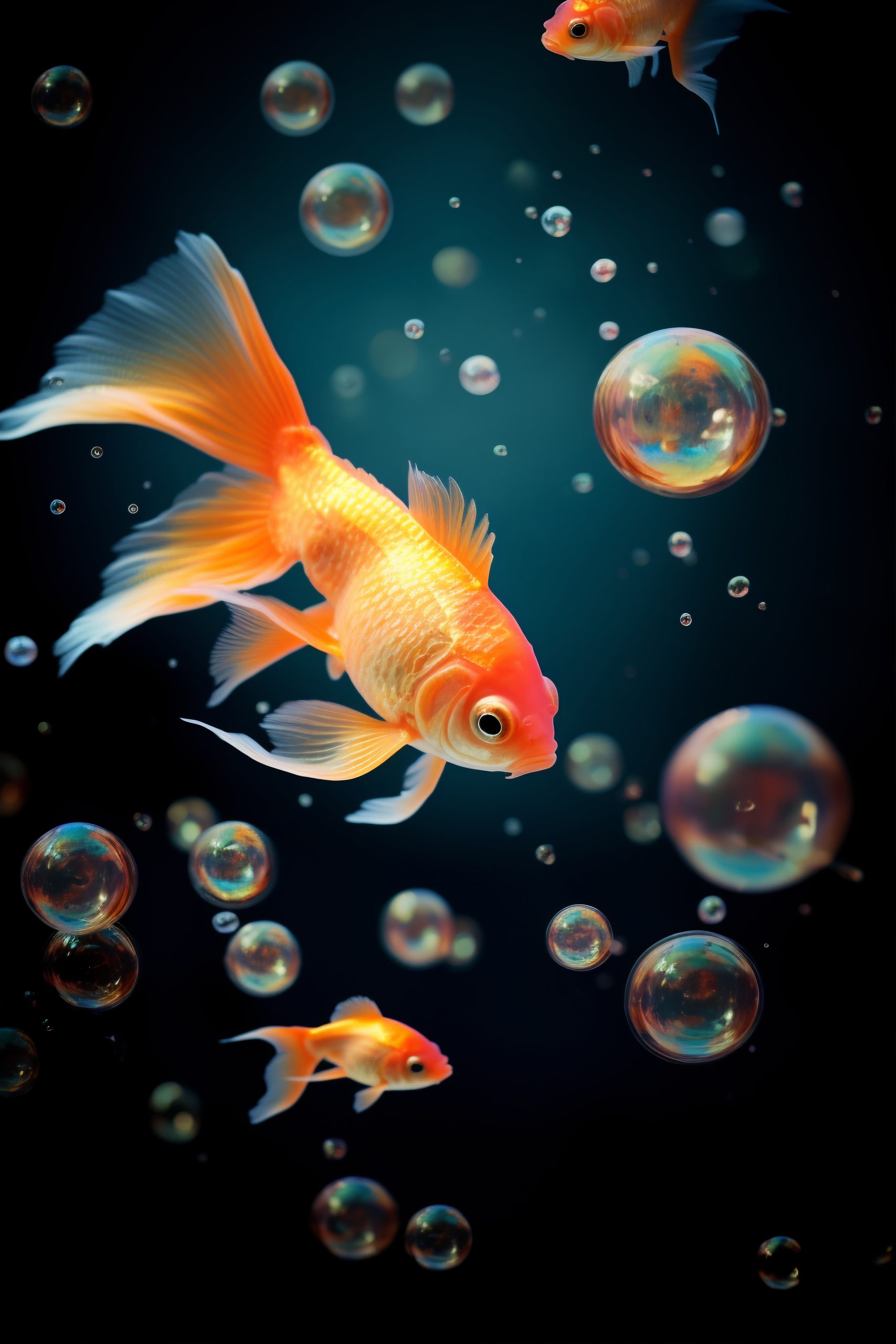



FISH AGILITY, YES!
ABOUT THIS SITE
HOW I GOT STARTED
TRAINING BEGINS
WHAT CAN A FISH LEARN?
GET STARTED TRAINING YOUR FISH
HOW TO TRAIN TRICKS
WHAT YOU DO NOT WANT TO DO
If you are training or would like to train your own Small Pets or Fish, we would LOVE to have you join us at the Yahoo Groups site, just click on the box above. It is a great group of people with a lot of small pet keeping and training knowledge.
I thought there would be more fish training advise on the Internet. What I found written was just "no duh" stuff and the writer bored me, aggravated me, with her "cutsie crap writing" and no real training content. Then another guy that was all sell, sell, sell his products to you so that you too can/could train your own fish. Nothing about really out there on actually training the fish. But let's face it. Training a fish or a rat or a dog, not rocket science.....even thought there are those that want you to believe it is so. And really, training any animal, even humans, pretty much the same.
This photo of King Fredrick is not great, but I still wanted to show him off. In the photo his tail is not "open" and it is a shame, his tail is really pretty. Let me add for those that jump to conclusions, this is the container he came home in. Not the bowl he lives in.
Once your fish has learned all about the feeding tube, or call it the target stick, you can then train it to come through a hoop. Coming Through a Hoop for small animals and or fish is a real good trick to start with. It teaches the fish to learn to learn. The idea is to teach the fish it needs to preform a task, or we call it, learn a trick. Once the fish learns you want it to do something, teaching the next task or call it trick, is easier and will take less time for the fish to learn.
Do not leave training aids in the bowl or tank with the fish. Remove them after each training session. You want the fish to notice the item, to expect something to happen with these items arrive. If left in the tank bad habits around them could also occur. If you want your fish to swim Through a Hoop, you will have it go through the same direction each time. If you leave the Hoop in the tank the hoop becomes part of the decor, not a training aid. The fish may also start swimming through the hoop, either direction, and be confused when it does not receive a treat.
Some metals are ok to use for training aids, others can change the PH balance of your tank. But to be honest. I am not sure the few minutes per day you work with your fish with a metal item in the tank would hurt. But please check on that before using most metal.

I was Interviewed by a writer doing an article for an Aquarium Fish Magazine. Here are my answers:
1. How did you first hear that it was possible to train fish and what inspired you to train fish of your own?
I have had animals/fish most of my life, I will be 55 this coming March. As a kid I was always training one animal or another to do tricks. Fish learn very quickly that when you walk up, pick up the food container that sits right next to the tank, open the lid, food comes in. So the fish come to the top of the tank to anticipate their meal. I also noticed, years ago when I had a 55 long tank that housed Goldfish, my fish would follow me as I walked by. So training fish just made sense to me. To back that up, many years ago my brother had Oscars he had taught to play with a ping pong ball with him. The Oscars too followed my brother as he walked by the tank. Not everyone, just him. Yes. I was sure fish had a brain for training.
I have taught agility to all sorts of animals including and probably not limited to dogs, goats, guinea pigs, mice, pet rats, hamsters, gerbils a few fowl....... so when I started training my Betta Fish to go through a little tunnel, no one that knew me was surprised. However! As I was, they were surprised how quickly the fish caught on to what I wanted it to do.
2. How is it possible to train a goldfish when supposedly only have a thirty-second memory? ( this is basically a questions set up so that you can debunk the myth)
My question is; WHO DECIDED THAT GOLDFISH ONLY HAVE A 30 SECOND MEMORY!? Certainly this person did not actually try to teach the fish in a humane way using food as a positive reinforcement. And really, if that were true would not a goldfish forget how to swim? I promise you, that if a person takes the time it takes to patiently work with a fish, if they work with it just a few minutes each day, if that person shows up at feeding time with the correct equipment and a good attitude, an attitude of patience, they can teach a Goldfish and will be quite pleased how much the Goldfish will retain the following day when that same person shows up the next day. I know for a fact, I know first hand, that Goldfish and other breeds of fish can and do remember how to preform tricks and tasks just as any other animal can, will and does.
Years ago after I had finished a little dog trick show at a Pet Store, a lady came up, one that knew me, and said "You are so lucky, you always get smart dogs. I always get dumb dogs." I looked at her, and sometimes the truth hurts, I said to her, "Maybe it is not the dogs, but the way you train." The same is true of a lot of people. If they can not do something, it must not be something anyone can do. Or they blame the animal's intelligence. That is where I believe the "Goldfish have a 30 second memory" misconception came from. Every animal is trained a bit different, but the basics are true for all animals, and that includes human children, husbands and wives. If you treat another living being with respect, and also expect them to respect you. If you reward good behavior and don't allow bad behavior, you are training. Let me take this thought a step further for the non animal trainers. If your husband or wife does something that annoys you and you never speak up and tell them this, they will never know and continue the behavior. If you let your husband or wife or child disrespect you, it becomes a habit, one they will push to the degree of hurt. Ever hear of pecking order? The term describes chickens, but is true for all living beings, and yes, even people. Pecking order is how chickens find out who is the top leader in the group. They actually peck one another. The one that keeps pecking and does not surrender, is at the top of the pecking order. For people, it is usually voice and attitude. Children often, through disrespect take over the top of the pecking order, even over it's own parents and often at a young age. House dogs will do this also. It is the old "Who is in charge here?". As trainers it is that we hold the food, we have the thumbs. We can let our pets decide when we feed them, or we can decide when we feed them. THIS DOES NOT MEAN THAT WE TAKE ADVANTAGE OF THIS AND MISTREAT OR TEASE THEM. Again, respect.
The person holding the animals food with the thumbs has many advantages. This is where the "rubber meets the road" in training. This is where you work with your fish and train it to swim through a (at the beginning wide) hoop or tunnel before it receives the food. Is this mistreatment? No. It is shaping. Think of it like this... A person has to drive to the fast food store, go into the parking lot, get out of their vehicle, walk to the counter, ask for the food, reach into their pocket for their money, then they receive their reward. Think of it as if the fish is learning how to get to the counter.
How do you teach that? Use a tube, I use an empty ink pen shaft, set a flake of food on the water surface (floating food is best for beginning training) and set the tip of the pen shaft just above the food. I lightly tap the side of the tank with the pen shaft as I set the food in and hold the shaft over the food. Do this for a couple of days in the same spot. One the third or fourth day, hold the pen shaft over the water, the fish will come up to it, now slowly, slowly, move the pen shaft to another spot, then drop the food. The fish will follow the pen shaft. After a couple of days of this, you can place a Hoop in the water and have the fish come through it to meet the pen shaft.......I bet you did not think fish training would be that simple, but it really is.
3. How popular is fish agility?
Not popular enough. It is catching on. Now with video sites and the general public seeing and not just hearing about fish learning agility and tricks it encourages them to "try this at home". Most pet people now have heard about fish agility and fish training in general. Many are interested in learning to teach their fish. Some might only want to teach their fish to do a little trick while others would love to teach agility and other tricks and tasks. Like people with dogs, some put training time in, others do not.
4. What are the easiest breeds of fish to train?
I don't know. I have not worked with enough fish or enough fish breeds to correctly answer this question. I have however trained Guppies, Goldfish and Male Bettas and I can tell you that all three breeds caught on faster then anyone thought a fish could learn. I think the main thing is that the trainer needs to enjoy that breed that they are going to train and be set up for that type of fish. An Oscar, as exciting as they are, get very large and do have more of an odor then other smaller aquarium fish. Betta Fish do not need a full blown tank to be healthy and happy.
5. What advise would you give to people who are considering training a fish?
If you already have the fish, watch it. Know it's habits. The truth about any trick or task, such as agility, the person is building on what the animal already enjoys doing. If you have a certain fish that picks things up off the bottom of the tank, teach that fish tricks that are about moving items, such as balls around. If you have a fish that loves to swim through a ring or tunnel shaped aquarium ornament, you have a fish that will enjoy and quickly catch onto Fish Agility. The other thing is the person/trainer needs to have that moment or a few minutes alone per day, every day, with their fish. Fish do not receive the credit they deserve for being aware of what it going on in the room around them, that is the room where their tank sits. If you have kids running around, a cat on a shelf above the tank, the TV blaring, you are not going to have the fish's full attention so that it can learn. Some fish will learn as life goes on, ie someone out there will say they trained while the kids played and the TV was on. My thought on that is: What could that fish (or any animal) have learned if they had that one on one time with nothing else distracting them?
When you train a fish you, the trainer, need to have a goal. You don't just wait for the fish to stumble unto something on their own then treat them. You show up with the proper equipment, the proper feeding devices, the time and the attitude of patients and you take the time it takes to train that particular fish. Start with two items as simple as an empty in pen shaft and a Hoop with a handle on it made from a Pipe Cleaner. Teach your fish to swim through the Hoop before feeding it. After the fish learns to come through the hoop, move the Hoop to other areas of the tank and ask the fish to come through it there. Take the Hoop lower and higher. Now you can move on to a little tunnel made out of Plastic Canvas. Fish learn the same as a dog or even a person. Step by step. Little by little. Work with your fish everyday, do the same thing everyday. Set the Hoop in the same spot everyday until the fish comes, and you know it knows, to swim through it. After a few days of the same thing, you are ready to teach the next step.
In other words... don't run out and buy a bunch of Fish sized Agility Equipment and set it all up and think the fish is going to go through each piece. You start training with something small and easy. You teach the fish to learn. Once it learns one task well, you can add another item to the set. Let's say the trainers fish is now going through a Hoop and doing it well. This trainer could then add a Tunnel in front of the Hoop for two items for the fish to maneuver before it receives it's reward. Always put the new item you are teaching in front of the one the (any animal) fish already knows. This way it will see the familiar from the new, once it has completed the new, it will go right on and maneuver the familiar.
Never leave any training equipment in your fishes environment. Training equipment is meant for one on one interaction time. Special, I am going to feed you for good behavior time.
If your fish does not come through the Hoop when you go to train. Pull the Hoop out. Walk away and come back later, a few minutes later, and just feed with the pen shaft above the food again. In other words. Don't feed it the training secion does not go well, but back up the training after walking away for a minute or so. NEVER NOT FEED YOUR ANIMALS! NEVER!
6. What skills is a fish capable of learning?
That is still to be answered, I don't think anyone has taken aquarium fish to the end of their training abilities. Of course a fish is never going to be a See and Eye animal or go and fetch your newspaper, but there is much they can and will learn to do inside their tanks. A fish can learn to swim through items if the items are large/wide enough for the fish to get it's swimming body safely through it. They can learn to go under and or over items, swimming of course. A fish can learn to push a light weight item either on the bottom of or at the surface of their tank. A fish can learn, and this is a very advanced trick, to carry in their mouths, items that have a sort of handle and are light enough for the fish that is learning the task. Fish can learn to ring bells. I don't recommend have a fish jump up for their food as dolphins do. I think this is one of those things that certainly could be taught but the fish could also become hurt or even dead preforming when you are not around. And yes. Animals do perform the things we teach them all by themselves from time to time.
Tricks become tricks when the trainer uses behaviors to look like the animals are doing something human. Take Soccer for example. All the fish knows is that it is pushing something it has been taught to push from "here to there". What the trainer does is design a little Soccer Field and make the round item the fish is pushing look like a Soccer Ball. So when the general public see the fish pushing this Fish sized Soccer Ball across the Soccer Field, they think "HE HAS A FISH THAT PLAYS SOCCER!". So, the question "What can a fish learn?" is really only stopped by the fish trainers imagination.
7. Are there any ethical matters to take into consideration when training a fish?
Shame you have to mention this. It seems some folks don't want to take the time it takes to work or train animals. They want to hurry things, or perhaps they just don't understand that punishment does not often work with most animals and certainly not a fish. You can not teach a fish with force or punishment. You might scare it through a tunnel, or you might push under an arch, but that is not training. Your fish will not only not learn, it will have a terrible life in fear of the very people who keep it, feed it and care for it's tank. What a shame.
When animals are taught correctly those animals look forward to training time. They like the attention, the rewards, your approval. When they are taught with fear, they not only do not look forward to the time with the trainer, they will learn to fear and hide and hate. I am sure that the same is true of a fish. The really do have a brain. Think of how you can startle a fish in their tanks. Some people who themselves were not trained properly think this is fun and funny. But to the fish, not funny or fun at all. So let's not sell fish short when it comes to cruel training either. Treat them with respect.
8. Where can a fish owner find the equipment required to create a fish agility course?
There are so many items a person can make that will work well and are safe for both the fish and the fish's tank. Pipe cleaners, plastic canvas and ink pen shafts can become many different items for training a fish. Hoops, Double Hoops, Hoop connected together to become "Weave Hoops" are just a few ideas. Making your own items is fun and kids can even help. There is a pride involved when your fish uses the items you make yourself for the purpose the fish has learned. There are also items available on line if a person wanted to purchase already to go fish training equipment. I would highly recommend that you make your own first few items before you purchase anything. See what kind of a fish trainer you are. See what items your own imagination can come up with. This way you also have unique items.
9. Are there any competitions that fish can compete in?
Not to my knowledge. But you might be surprised to know that Rabbits and Pet Rats now compete at Agility and or Show Jumping at Shows, Pet Stores now have VBET Hamster Ball Races, Pet Tricks and or Pet Costume Competitions are no longer just for dogs. So it probably will not be long before someone somewhere takes on the task to coordinate Fish Agility at Fish Shows.
10. Finally is there anything else that you would like to add?
I would like to add that it is a shame that many/more people do not understand that fish are living beings and they do have a brain and feelings and can certainly be taught to become enjoyable INTERACTIVE pets. I am hoping that with Fish Agility and the general public seeing fish doing tricks and tasks fish can then live a bit better life. Maybe kids can learn more about caring for animals again and enjoy that fish that is the only type of animal they can own. Fish need to become more then the "go to" pet for parents that don't want their children to own pets. I am hoping that even the parents will have more respect for the fish ion their homes.
And how fun for a Fish Enthusiast to have a fish that does tricks and or agility. Some how family members will certainly quit asking "Really? Fish?" "Fish again?" "Why do you spend so much on your stupid fish?"
Fish Agility Courses
If you have your fish bowl or aquarium set up with obstacles, the type and size your fish can manipulate, if you have slowly and patiently trained your fish to go the course, you bet a fish can and will do a little Agility Course including hoops, weave poles and limbo poles and whatever other little pieces you have worked the fish on to complete a little course. Of course at the end of the course your fish will expect the pay off…..food.
You must train the fish do manipulate each of your Agility Equipment Pieces separately before setting it all up and thinking the fish will just swim around and through and over and under all the items you set up. After the fish has learned to do each of the pieces, you will want to start working on the course. You will set the course up the same each time you set it up in the bowl/aquarium. Start with two, have to fish do them for a few days, then add another piece either in the front of or the end of your course. Again, have the fish do theses pieces for a few days and add another. You will not want more then three to five, and probably three is the most you will want your fish to swim in a course. Could they do more? If you are a good trainer you could certainly teach them to do more. Space in the bowl/tank is an issue too.
So what sort of items might you use for your Fish Agility Course? A hoop can be about any small round item that is safe for the fish, it’s water and your hand. You might even fashion the item to hang from the side of the bowl or aquarium. You might find an itty bitty tire (take one off a small toy truck or car) and fashion it in a little frame. Many people have used Pipe Cleaners fashioned into hoops and weave polls and other shapes to train their fish. I have never heard of a problem with anyone’s fish or water while using these. You of course do not leave them in the bowl or tank, but only put them in for the short training sections. I use Pipe Cleaners myself to train my own fish.
Hoops, Tunnels, Weave Poles, Limbo Poles, End Bells and More, yes, fish really do swim Agility Courses. Not only is it fun, it is very rewarding to interact with your fish, it is also entertaining to train your fish and then to show it off to your friends and family. Believe it or not, even the fish enjoy the fun. It gives them something different to do. You never leave your Agility or Training Equipment in the tank with the fish, so when they see the Equipment coming they soon learn that not only do they have something different to do, food will arrive with the fun.
If you have ever trained any sort of animal you already know that you need to be precise and consistent with your training. Get everything you will need to train for that day ready and right there before you begin. Put everything else on hold and turn your cell phone off. Right now, for these few minutes, it is all about the fish. All of your concentration and focus will be on the fish you are training.
You also know that training an animal is a baby step by baby step process and one that will take time. Once the animal has learned to learn teaching other steps, or pieces or Agility Equipment or Trick Props comes easier for each piece taught.
THE FISH AGILITY EQUIPMENT

FISH AGILITY HOOPS
Fish Agility Hoops as well as Fish Agility Tunnels are the easiest of the Agility Equipment for Fish to come up with or shall I say gather. I use something so simple and cheap and most craft folks have them around looking for a use, Pipe Cleaners. You can bend the end of one to make a large Hoop for training, take the same and make it smaller as the fish learns. You will also have a handle for the Hoop that you might hold or hook over the bowl/tank.
Training animals to come through a Hoop is a great starting piece for both the trainer and the animal. You can move the Hoop so that it stays in front of the animal and hold a food treat on the far side to entice them to come though.

FISH AGILITY TUNNEL
here are many safe items that a person could use for a Fish Agility Tunnel. As I said above, these are the easiest of the Fish Agility Equipment to find...for free. You might use a small plastic bottle that has been cleaned and had the bottom cut out. Drill or poke a couple of hole into it, add a pipe cleaner or fishing line for your handle or place to hang it over the bowl/tank from, and you are ready to start training.
Once your fish is swimming through a Hoop, having it come through a Tunnel is easy for them. Train in the same way you did the Hoop, but use the tunnel. Do not move the Tunnel after your fish has come through it. You do not want to startle the fish with the motion. Some fish also take the same "route" back from eating that they used to get to the food, so your fish might just swim back Through your Tunnel after it eats.

FISH AGILITY LIMBO POLE
The Fish Agility Limbo Pole is kinda the opposite of dogs or guinea pigs jumping over an Agility Jump. It is a fixed pole that the Fish Swims Under. It can be set in so many ways. Some folks set these so that the fish must get down and swim on it's side to go under it. Just do not make it so low that the fish drags it's scales on the pole and the floor of the bowl/tank as it swims under the pole. You also want your Limbo poles to be smooth textured.
Set up your Limbo Pole and make sure it is stable. At fist you will want the Limbo Pole set up high so that your fish does not have to go too low into the tank to learn this trick. Make sure that when the fish swims under it the Limbo Pole will not move. Using your tube/pen shaft have your fish follow the pen shaft down to the Limbo Pole, but set the tube/shaft close enough to the Limbo Pole that the fish is on the far side of the tube/shaft. Move the tip of the pen shaft under the Limbo Pole, your fish should put it's mouth near the tube/shaft, pull the tube/shaft so that the fish follows the tube and swims under the Limbo Pole. Feed your fish right away after it comes through the Limbo Pole.
After you have had your fish go under the for a few days, you will probably only need to set the tube/shaft near the Limbo Pole for the fish to know what you want it to do.

FISH AGILITY WEAVE POLES
You might use a few Pipe Cleaners to make your Weave Poles for your fish. You could make them into little Hoops or fix them so that they are as would be poles that stick up from a frame shaped out of your Pipe Cleaners. Make sure that if you do use Pipe Cleaners for your Fish Equipment your Pipe Cleaners are clean, never before used, and I rinse mine in hot water and let them dry before using them for the fish tanks. Never leave your Pipe Cleaner Equipment in the tank with the fish. Also make sure that all the edges are wrapped tight so that 1) the items stay together as you lower and raise them into or from the tank. 2) No sharp edges looooooming about.
Set up your Limbo Pole and make sure it is stable. At fist you will want the Limbo Pole set up high so that your fish does not have to go too low into the tank to learn this trick. Make sure that when the fish swims under it the Limbo Pole will not move. Using your tube/pen shaft have your fish follow the pen shaft down to the Limbo Pole, but set the tube/shaft close enough to the Limbo Pole that the fish is on the far side of the tube/shaft. Move the tip of the pen shaft under the Limbo Pole, your fish should put it's mouth near the tube/shaft, pull the tube/shaft so that the fish follows the tube and swims under the Limbo Pole. Feed your fish right away after it comes through the Limbo Pole.
After you have had your fish go under the for a few days, you will probably only need to set the tube/shaft near the Limbo Pole for the fish to know what you want it to do.

THE FISH AGILITY END BELL
The Fish Agility End Bell is a small or little, depending on the fish breed or type, that the fish rings at the end of the Agility Course. There are a few ways to have this set up, but perhaps the easiest and cleanest way is to have a string attached to the bell for the fish to pull.
NOT NEW TO FISH KEEPING
We are not new to Fish Keeping. I have had fish on and off, more on, in my lifetime since I was a child. I also had “Sea Monkeys” and followed the instructions that came with them for Training Them to do Tricks. I had them as well as my first, that was mine and mine alone, aquarium. When I won the goldfish from the Ping Pong tosses as School Fairs and Carnivals, mine lived. I had them in bowls and they lived quite some time.
My husband has had fish since he was a young child too. Fish were the only animals he was allowed to keep as a young boy. He remembers his first coming from the Central Hardware Store. Their Pet Dept. was no longer but that day they had a child’s swimming pool full of bags of goldfish for sale. Since then he has had fresh water aquarium in his room growing up for many years. He has also owned and maintained (some of you will know what all this takes) a salt water aquarium that included not only salt water fish, but also Sea Horses, Shrimp, Crabs, Anemones, Corral and more.
So neither of us are new to keep fish, but neither of us really trained fish more then just to have them follow us or our hands around the tank.
HOW I PICKED OUT MY FISH TO TRAIN
WHAT MY HUSBAND SAID WHEN I TOLD HIM I WAS GOING TO TRAIN THE FISH
Deron and I have taught ALL SORTS of animals tricks and tasks and agility. Deron has been very supportive. When I wanted to train Pet Rats to do Agility there was very little information "out there". Deron had built several pieces of Dog Agility Equipment, as well as Rabbit Agility for me, so he took out a pencil and did the math to bring the sizes down for a Rat.
When I walked over to him in the store with two fish I was trying to decide between and showed them to Deron, he said, "Get both." I chose one.
WHAT I AM DOING DIFFERENT WITH KING FREDRICK
NO CLICKER TRAINING FOR US
Teaching Fish Tricks
WHAT CAN A FISH LEARN?
HOW TO TRAIN TRICKS
WHAT YOU DO NOT WANT TO DO
IT IS NOT ROCKET SCIENCE!
What can a fish learn? Well, with the right trainer, actually quite a few things. Fish can indeed learn to do agility around and through little Agility Equipment such as Hoops and Tunnels, go under Poles and even Weave Poles. I have seen fish play ball with humans using a Ping Pong ball. I have seen them Ring Bells and Play Soccer, and Basket Ball. I even saw a video of a fish Fetching a Little Ring and Doing the Limbo under a little Limbo Poll. Limbo and Agility Weaving Polls, so much different then a Fishing Pole.
To train a fish you must take it slow and be patient. You must have a plan, ideas of what types of tricks you want to train, and little props that are not only safe for the fish to use, but also safe for the water it lives in. Remember the fish will need to understand what you are asking it to do. You will need to set the fish up for success with each trick, task or piece of Agility Equipment you are trying to teach it. You can not get into the tank/bowl with the fish and even if you could you would still need to be clear in what you are training the fish. Each little bitty move the fish makes in the correct direction of learning, must be rewarded.
First of all do not set the sites for your training so high that you are disappointed. Your fish is not going to learn Search and Rescue. But it can learn small tasks. You must take your time. Be patient. Little by little, call them baby steps while training your fish.
Never, ever, try to punish your fish. That would be abuse. Your fish has no idea what you want until you take the time to break down each little bitty step for it to learn. Think of teaching someone that does not speak your language. How quickly would you yourself learn? Absolutely depends on the teacher and how well they communicate with you. Smacking you is not going to help you learn.
Do not leave training aids in the bowl or tank with the fish. Remove them after each training session. You want the fish to notice the item, to expect something to happen with these items arrive. If left in the tank bad habits around them could also occur. If you want your fish to swim Through a Hoop, you will have it go through the same direction each time. If you leave the Hoop in the tank the hoop becomes part of the decor, not a training aid. The fish may also start swimming through the hoop, either direction, and be confused when it does not receive a treat.
Some metals are ok to use for training aids, others can change the PH balance of your tank. But to be honest. I am not sure the few minutes per day you work with your fish with a metal item in the tank would hurt. But please check on that before using most metal.
There are many people "out there" today that want you to believe that training an animal is either new, or Rocket Science. Let me tell you, like Solomon said way back in Ecclesiastes 1:9 (Holy Bible NIV Version) "What has been will be again, what has been done well be done again; There is nothing new under the sun." Solomon, owned and worked with many types of animals. If you read I Kings 10 you will read about not only his MANY horses, mules and donkeys, but also his apes, baboons and more.
To train an animal, any animal, including a fish you do/will not need a noise maker, you do not need a degree in animal behavior, you just have to connect with the animal you are training, be patient and quick to reward.

